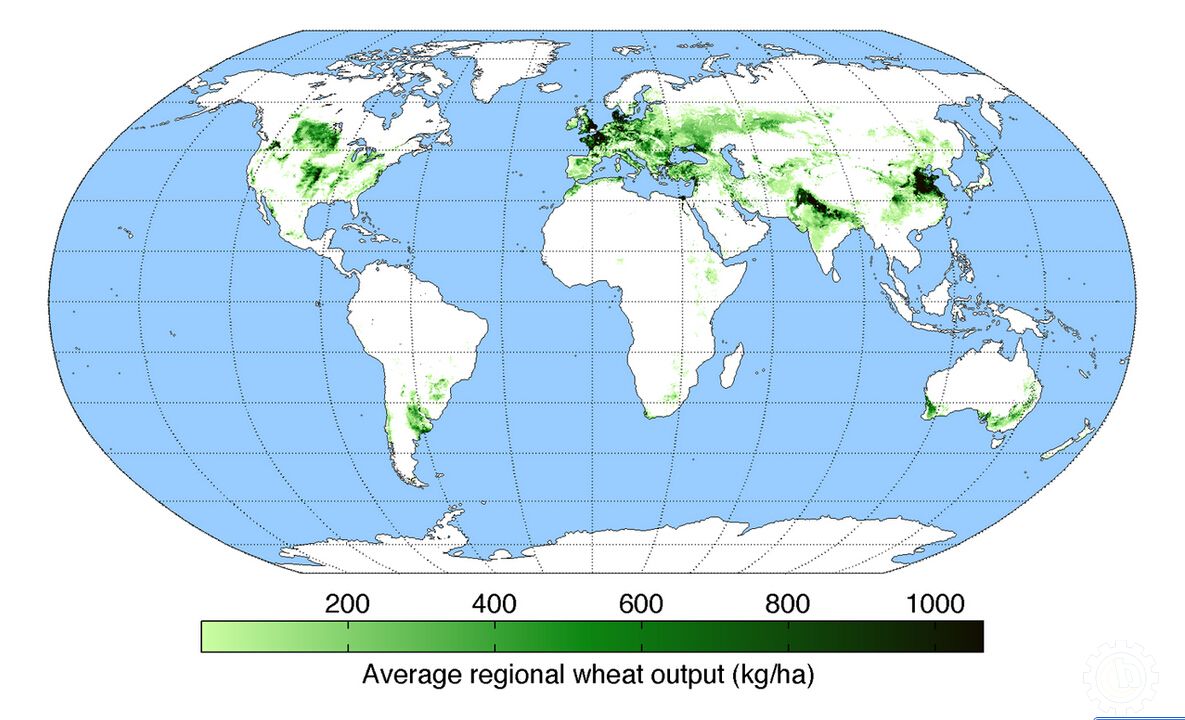wheat prodcution and consumption
In 2011, global per capita wheat consumption was 65 kg (143 lb), with the highest per capita consumption of 210 kg (460 lb) found in Azerbaijan. In 1997, global wheat consumption was 101 kg (223 lb) per capita, with the highest consumption 623 kg (1,373 lb) per capita in Denmark, but most of this (81%) was for animal feed. Wheat is the primary food staple in North Africa and the Middle East, and is growing in popularity in Asia. Unlike rice, wheat production is more widespread globally though China's share is almost one-sixth of the world."There is a little increase in yearly crop yield comparison to the year 1990. The reason for this is not in development of sowing area, but the slow and successive increasing of the average yield. Average 2.5 tons wheat was produced on one hectare crop land in the world in the first half of 1990s, however this value was about 3 tons in 2009. In the world per capita wheat producing area continuously decreased between 1990 and 2009 considering the change of world population. There was no significant change in wheat producing area in this period. However, due to the improvement of average yields there is some fluctuation in each year considering the per capita production, but there is no considerable decline. In 1990 per capita production was 111.98 kg/capita/year, while it was already 100.62 kg/capita/year in 2009. The decline is evident and the per capita production level of the year 1990 can not be feasible simultaneously with the growth of world population in spite of the increased average yields. In the whole period the lowest per capita production was in 2006."
In the 20th century, global wheat output expanded by about 5-fold, but until about 1955 most of this reflected increases in wheat crop area, with lesser (about 20%) increases in crop yields per unit area. After 1955 however, there was a dramatic ten-fold increase in the rate of wheat yield improvement per year, and this became the major factor allowing global wheat production to increase. Thus technological innovation and scientific crop management with synthetic nitrogen fertilizer, irrigation and wheat breeding were the main drivers of wheat output growth in the second half of the century. There were some significant decreases in wheat crop area, for instance in North America.
Better seed storage and germination ability (and hence a smaller requirement to retain harvested crop for next year's seed) is another 20th century technological innovation. In Medieval England, farmers saved one-quarter of their wheat harvest as seed for the next crop, leaving only three-quarters for food and feed consumption. By 1999, the global average seed use of wheat was about 6% of output.
Several factors are currently slowing the rate of global expansion of wheat production: population growth rates are falling while wheat yields continue to rise, and the better economic profitability of other crops such as soybeans and maize, linked with investment in modern genetic technologies, has promoted shifts to other crops.

 Bidragon
Bidragon



 chili stem cutting machine will be export to India
chili stem cutting machine will be export to India



Leave a comment